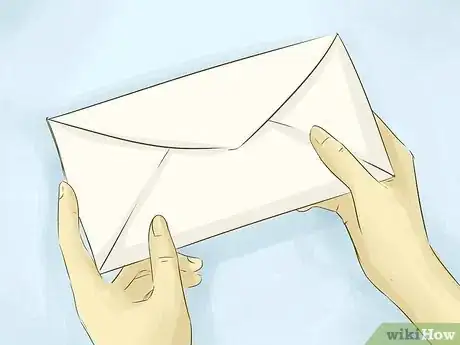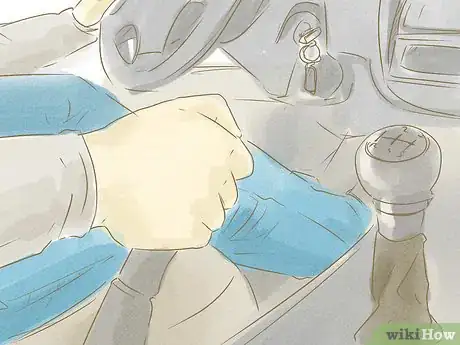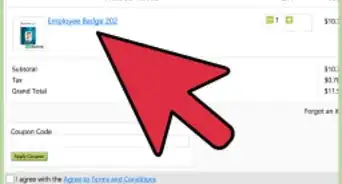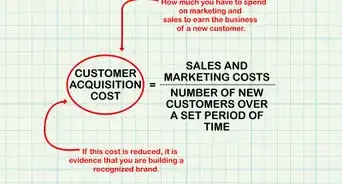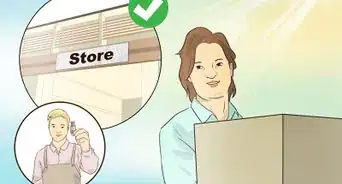wikiHow is a “wiki,” similar to Wikipedia, which means that many of our articles are co-written by multiple authors. To create this article, 14 people, some anonymous, worked to edit and improve it over time.
There are 8 references cited in this article, which can be found at the bottom of the page.
This article has been viewed 21,809 times.
Learn more...
Locating a company or business is a process that can be accomplished a number of ways given modern resources. Most businesses are easy to locate because they want their customers to find their location easily. That said, some companies can be harder to find if their offices and seller locations are separate facilities with different physical addresses. In this article, we'll show you how to find a company's physical address online and how to locate the actual building once you have the physical address.
Steps
Locating a Company You Already Know
-
1Examine the company's published material. For situations where you may have gotten a business card, letter, and/or hand out at a meeting, these are good documents to find such information.
- Look out particularly for the company's letterhead at the top of any letter and/or legal sized documents. Usually these have the company's name, address, phone number, and perhaps e-mail and website also in the layout. The company's social media contact info may also be in the display.
- Business cards can be more varied, so you may only get some of the information from a company such as phone number, e-mail, website, and/or address--in some mixed and matched layout.
- If the document you have is something entirely non-standard, still attempt to extract contact information out of it or at least the company's name. You can use the other search methods later on in the article to find the company.
-
2Attempt telecommunication first. This is the best way to introduce yourself to the company and get an understanding of what sort of business you are dealing with at the moment--even if you have dealt with them before.[1]
- You can use the telephone or e-mail contact in this instance. If you are contacting a particular individual you met before, for example at a job fair, you can try addressing or asking for them directly and reminding them of your prior meeting.
- For example, you may have met the human resources director of the company and are calling the number he gave you on a business card. You can ask to speak with him directly and say something to the effect of, "Hello, do you recall our meeting at the job fair your company held last week..."
- You may be able to put more details within an e-mail than a phone call, but the phone call is a bit more personal.
Advertisement -
3Engage in written communication. This is after initial contact, and you are pursuing some further business with the company.[2]
- Whether your business is employment, sales, communication, etc... you need to establish two-way written communication with the company.
- You may be able to get the postal address from the company's materials as mentioned in the earlier steps.
- Another way to get the postal address during this method is to ask for it some time after the initial contact phase--in a follow-up phone call or e-mail. This has the added bonus of showing your continuing interest in the company. You can also let the contact know in advance that you will be making formal written requests.
- An example of this might be you intend to partner your business with the company you located, so need to send legal documents in written physical form.
-
4Learn the physical area of the company. After you have learned the location of the company, you can learn about the area itself.[3]
- You don't need to learn the minute environmental details, unless that is a direct bearing on the business at hand, but learning the general climate and its impact on the company may help.
- For example, if the company you are locating is an amusement park--finding out the time of year it general gets warmer and colder would be beneficial.
-
5Travel to the company. This should be done once communication between you and the company is well established, and you have a decent understanding of their locality.
- Expect that some of your impressions of the locality, business, and employees will change upon arrival.
- Exercise polite business etiquette at all times. Show respect, but be firm in your own requests.
- For example, if you've located a cafe you want to partner with your bakery, then you need to make a persistent offer without offending them.
Finding a Company Online
-
1Perform a web search for the company. There are numerous web search engines, but you should use one that is not over-loaded with ads and spyware.
- Make sure your virus scanner is running and up to date.
- You probably won't find a completely ad-free search engine, but if the site has so many ads it's slowing down the response--avoid it.
- If you cannot find the company as you typed it, try advanced searches with different combinations. For example, if you are looking for companies that sell batteries you can mix in electronics, hardware, video game stores, department stores, etc...
- If you are getting too many results, then you can narrow the search down by adding some words such as a probably location (region, or city), or another qualifier. #* For example, if you need a shop that sells a particular brand of wine in your area you can refine the search by typing in "vineyards," and adding in the names of counties nearby, and/or the variety of wine.
-
2Verify the company's information with official sources. Once you have the company's basic information from the search, you can use related sources to double check the authenticity.[4]
- If the company's physical location is readily available, check the locality's chamber of commerce website or city government's website for information. If neither is available or has no listing, try multiple local travel guides.
- You might also try state and federal government sites for assistance.
-
3Establish the company's credentials.[5] [6] [7]
- Run the company's name through the Better Business Bureau for a quality of service check.
- The U.S. Chamber of Commerce and Federal Trade Commission may include the company's information within official government rolls or the company's respective state may retain that information.
-
4Make e-contact with the company. If the company has a safe website, check it out thoroughly first. This should also have their contact information.
- If the website is noticeably lacking in contact information, this could either be simply poor design or a sign the company is not interested in direct contact.
- If you have trouble finding contact information from the company's electronic displays, contact one of the official repositories you saw them listed in before to see if they have another means to make contact.
-
5Determine if a physical visit is necessary. Depending on what business you wish to conduct, a physical visit may be required.
- If the company is making contact difficult, and your business with them is not urgent, you may wish to reconsider doing business with this company at all. Under these conditions, you should get more information on the company's behavior from other reviewers before proceeding at all.
- If you have made successful contact and/or you insist on further activity with the company, then you may need to personally travel to their location. For example, if this is an online company you ordered a product from and you wish to tour their production line, a physical visit would be one way to see their process in action.
Physically Locating a Company
-
1Collect several comprehensive guidebooks. You will want a good selection by region and theme. Make sure these are up to date guides.
- Any standard bookstore or travel shop should have the guides you would need.
- Look for guides that include multiple geographic areas in local, state, and regional detail. For example, if you are looking for companies in Texas, you want guides that might include the Dallas metro area, Texas, and the American South-West or Mid-West.
- Include guides that have indices of businesses preferably in alphabetical and categorical order, this will help you flip back and forth between finds.
-
2Narrow down the search to a manageable sized region. As you figure out where your company is located, you can focus on the guides for those areas.
- If you're still not sure what your company's name is, use the category index first to get an idea of the types of business that do what is you are looking for. For example, if you are looking for fishing gear shops--see what's in the sporting goods section.
- Use the alphabetical index to see what variations there might be on the company's name if you have a partial idea of the title.
- Once you have the company name(s) picked out, you can use the guide's information to see how many locations these businesses may have and can narrow your search to find the particular office you want.
-
3Mark several phone numbers and addresses to attempt to contact. Use the smaller list you made in the previous step to create a contact list.
- Ideally, this should be just a few companies to contact to find the one you are trying to locate, perhaps no more than 5 to 10. If there are more than this number, you should attempt to narrow your search in the guides some more.
- If you can verify the information from the company in more than one of the guides, do so.
- Mark these companies in the guides, and write their information out on a separate location/list.
-
4Contact a chamber of commerce. Note the physical location each company is in and use either a phone book or directory assistance to contact the chamber of commerce.[8]
- If the company is in your immediate area, you can use a phone book to contact your chamber of commerce.
- If the company is in another area, use directory assistance to get the number of or connect you to the chamber of commerce. Directory assistance can be reached by dialing "411" on most U.S. phones.
- Once talking to the chamber of commerce, verify the company's information with them--especially the name and physical address. If there is a problem with the information, the reasons could be numerous including the guide being in error or the company going out of business after the guide's publication.
- If the information is correct, or it's not, mark it so on your list and do this for each you saved from your guides.
- Determine which company or companies you want to make further contact with.
-
5Contact the company directly by phone or certified mail. After you've established the company's physical location and contact information, you can try communication.[9]
- A phone call would be faster than mail. If this is a company with a relatively low electronic and social media presence, you might give them your phone number in return if you consider it safe to do so. For example, if you are contacting an old paper mill, you may want the foreman to call you back at a more convenient time.
- If you use the U.S. Postal Service for your initial contact, you should consider certified mail or at least a return receipt when sending correspondence. This way the recipient at the company has to sign for the letter, or at least the USPS will let you know when and exactly where the letter was delivered via a tracking number.
- For example, if you want to contact an old television show set with a reclusive producer--the certified mail method will at least verify someone is at the location. Or they have to refuse delivery.
Warnings
- If a company's displays--online or physical--lack significant contact information, you might want to track down reviews of the company's performance to see if they have problems that have caused them to reduce visibility.⧼thumbs_response⧽
- Never visit a company without letting them know you are coming.⧼thumbs_response⧽
References
- ↑ http://www.businessinsider.com/email-etiquette-rules-everyone-should-know-2014-9
- ↑ http://emilypost.com/advice/effective-business-letters/
- ↑ http://www.ready.gov/business
- ↑ https://search.usa.gov/search?affiliate=usagov&query=business+index
- ↑ https://www.uschamber.com/
- ↑ http://www.bbb.org/
- ↑ https://www.ftc.gov/enforcement/consumer-sentinel-network
- ↑ https://www.uschamber.com/
- ↑ https://www.usps.com/ship/insurance-extra-services.htm


